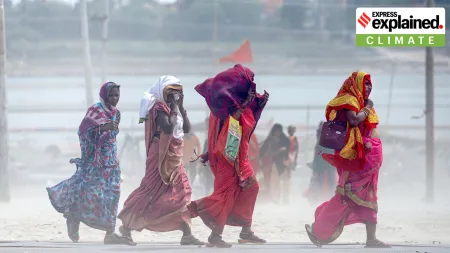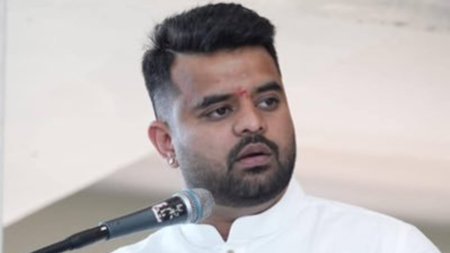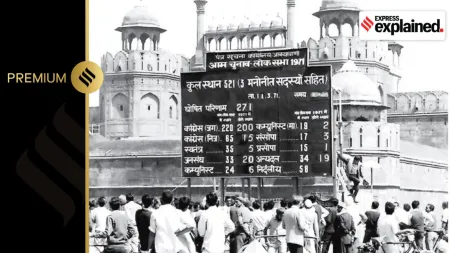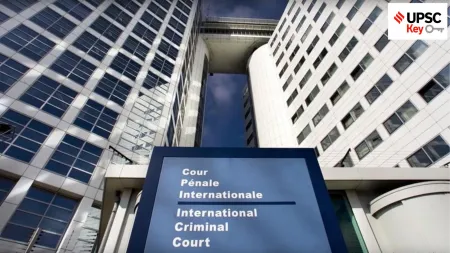- India
- International
If India has to meet climate change mitigation targets, it needs to take decisive action now
This is the time for India to take bold action if it wants to meet its objectives by 2047 or before. India must plan a green recovery from the current COVID-19 crisis to ensure a just and sustainable growth for its population. Doing this will take an incredible amount of resources and political will.
 The question of declining forest cover is also relevant in sensitive biodiversity hotspots, especially in the Western Ghats and in the forests in the Northeast.
(Illustration: C R Sasikumar)
The question of declining forest cover is also relevant in sensitive biodiversity hotspots, especially in the Western Ghats and in the forests in the Northeast.
(Illustration: C R Sasikumar)The fifth anniversary of the Paris accord last week was the occasion of a virtual global meeting — the Climate Ambition Summit 2020 — during which Prime Minister Narendra Modi made “a solemn pledge” that in 2047 “centennial India will not only meet its own targets, but will also exceed expectations” in terms of carbon emissions. This is a good occasion to assess the country’s policies regarding climate change.
India had set fair targets (Intended Nationally Determined Contributions) in the Paris accord in 2015 and has matched it with action in renewables and other sectors. Initially, India had set a target of 175 GW of installed renewables capacity by 2020 and a guarantee that by 2030, 40 per cent of its energy needs will come from renewables. In 2018, at the Global Climate Action Summit, PM Modi announced an ambitious plan to make India less dependent on coal and natural gas by aiming for 450-500 GW of installed capacity by 2030 through renewable energy. At the time of that announcement, the target was five times the amount of existing installed renewables capacity of 81 GW. Over the last six years, there has been a 72 per cent increase in installed renewables capacity, claims the minister for power.
Also Read | India must forge coalition with like-minded nations on climate change
Another important move that at first seemed slow but now is irreversible is electrification of transportation. This seems to be the most promising sector as transportation systems around the country look set to go electric, including local transportation in big cities. The Indian railways, too, is expected to go fully electric by 2024 with completion of electric lines by 2023, according to the ministry of railways. As this electrification spreads to consumer transportation, the demand for green energy will be higher than ever.
However, the solar industry has run into regulatory headwinds. By early 2020, there were cancellations of several auctions by the government. Then COVID-19 struck. Investors who were already facing tough markets and shutdowns from the solar supply chains in China pulled out. On August 21, the Central Energy Authority (CEA) published a report on “Under Construction Renewable Energy Projects” which listed 90 renewable projects amounting to 39.4 GW that were facing delays due to several reasons. Out of these, 20 GW worth of projects are facing delays and have been granted extensions of five months due to the impact of the COVID-19 lockdowns on global supply chains; a further 8 GW worth of projects lack even power purchase or sales agreements.

In addition to this, the market for rooftop solar, which was expected to grow to 40 GW by 2022, has fallen flat with an installed capacity of only 6 GW. The primary reason is once again a poor regulatory environment, despite both significant central and state subsidies for solar installations. The main problem has been Power Purchase Agreements between the distribution companies (or discoms, which are often state monopolies) and prosumers (producer-consumers) who would install the solar panels. Prosumers have little choice in the PPAs because they mostly only offer net or gross metering. Both these methods are ineffective according to experts, who recommend, instead, the installation of smart solar meters with more expensive metering during peak hours, which could then incentivise the consumer and the discoms to actively push more affluent Indians to adopt rooftop solar. These reforms, along with public outreach if undertaken urgently, could greatly improve the installed rooftop capabilities.
Also Read | Delhi’s real test on climate change is on building political consensus to adapt to changed reality
But the biggest challenge that renewables have to compete with is the coal industry. Despite significant gains in total installed capacity for renewable power in terms of actual power generation, coal still powers close to 72 per cent of India’s electricity requirement. Even if India is to achieve the 2022 target mentioned above, coal would still account for 65 per cent of its energy mix. The main issue is that most of the grid is still geared towards the thermal power industry. Another problem is the financial distress of the discoms, which prevents them from modernising plants, as the thermal industry is plagued by inefficient tariff setting, expensive PPAs and unsustainable cross-subsidies. Shutting down old and inefficient plants seems to be the best solution, but if the Central Electric Authority were to shut down the plants over 25 years old — as it should — close to 35 GW could be decommissioned.
Not only is coal not on its way out, but it is also seen as part of India’s future, as evident from a decision the government took last June: For the first time ever, it has decided to open 41 coal blocks for commercial mining to the private sector. This is aimed at addressing India’s excessive reliance on imported coal (30 per cent). In parallel, India plans to install an additional 60 MW of thermal power, which is surprising, considering that today renewable energy is cheaper than coal.
The other keystone in climate change mitigation is carbon sequestration, which is mainly done through forest cover and other plant resources. The target of 33 per cent of forest cover remains to be achieved, as Indian forests currently stand at 21 per cent of total geographical area (TGA). Of this, forests are classified in three categories: “Very dense forests” represent 3 per cent of the TGA, whereas “moderately dense forests” and “open forests” represent 9 per cent each. Over the last decade, the proportion of “moderately dense” forests have declined despite overall gains. Also, the fact that commercial plantations and farms are sometimes classified as open forests conceals the true extent of the damage that forests are suffering.
The question of declining forest cover is also relevant in sensitive biodiversity hotspots, especially in the Western Ghats and in the forests in the Northeast. Over the decades, the Western Ghats has seen a significant loss in biodiversity with an expected third already lost due to human expansion in the region. It is the Northeast, however, that has witnessed the most damage in the past decade. Of the eight states in the region, only Assam and Tripura have not seen a decline in forest cover.
This is the time for India to take bold action if it wants to meet its objectives by 2047 or before. India must plan a green recovery from the current COVID-19 crisis to ensure a just and sustainable growth for its population. Doing this will take an incredible amount of resources and political will.
This article first appeared in the print edition on December 19, 2020 under the title “Walk the green talk”. Jaffrelot is senior research fellow at CERI-Sciences Po/CNRS, Paris, professor of Indian Politics and Sociology at King’s India Institute, London; Ganesh is a student of politics and governance at Sciences Po Paris.
EXPRESS OPINION
More Explained
May 01: Latest News
- 01
- 02
- 03
- 04
- 05










































